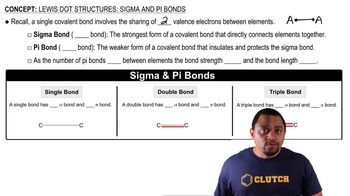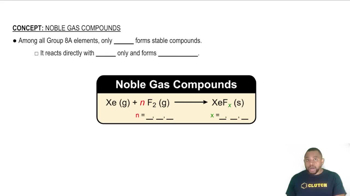Iron corrodes to produce rust, Fe2O3, but other corrosion products that can form are Fe(O)(OH), iron oxyhydroxide, and magnetite, Fe3O4. (a) What is the oxidation number of Fe in iron oxyhydroxide, assuming oxygen's oxidation number is -2? (b) The oxidation number for Fe in magnetite was controversial for a long time. If we assume that oxygen’s oxidation number is - 2, and Fe has a unique oxidation number, what is the oxidation number for Fe in magnetite? (O)(OH), iron oxyhydroxide, and magnetite, Fe3O4. (c) It turns out that there are two different kinds of Fe in magnetite that have different oxidation numbers. Suggest what these oxidation numbers are and what their relative stoichiometry must be, assuming oxygen’s oxidation number is -2.
Ch.20 - Electrochemistry
Chapter 20, Problem 86
An iron object is plated with a coating of cobalt to protect against corrosion. Does the cobalt protect the iron by cathodic protection?
 Verified step by step guidance
Verified step by step guidance1
Step 1: Understand the concept of cathodic protection. Cathodic protection is a technique used to prevent corrosion of a metal by making it the cathode of an electrochemical cell. This is typically achieved by attaching a more easily oxidized 'sacrificial' metal to the metal you want to protect.
Step 2: Identify the standard reduction potentials of iron and cobalt. The standard reduction potential indicates how easily a species gains electrons (is reduced). Metals with higher reduction potentials are less likely to oxidize.
Step 3: Compare the standard reduction potentials of cobalt and iron. If cobalt has a higher reduction potential than iron, it means cobalt is less likely to oxidize compared to iron.
Step 4: Determine if cobalt can act as a sacrificial anode. For cathodic protection, the coating metal should have a lower reduction potential (more negative) than the metal being protected, so it can oxidize preferentially.
Step 5: Conclude whether cobalt provides cathodic protection. If cobalt has a higher reduction potential than iron, it cannot act as a sacrificial anode and thus does not protect iron by cathodic protection.
Key Concepts
Here are the essential concepts you must grasp in order to answer the question correctly.
Cathodic Protection
Cathodic protection is a technique used to prevent corrosion of a metal surface by making it the cathode of an electrochemical cell. This is achieved by attaching a more reactive metal, which acts as a sacrificial anode, to the metal that needs protection. In this process, the more reactive metal oxidizes instead of the protected metal, thus reducing the corrosion rate of the latter.
Recommended video:
Guided course

Lewis Dot Structures: Sigma & Pi Bonds
Corrosion Mechanism
Corrosion is the gradual destruction of materials, usually metals, due to chemical reactions with their environment. It often involves the oxidation of the metal, where it loses electrons and forms metal ions. Understanding the specific conditions that lead to corrosion, such as moisture and electrolytes, is crucial for determining effective protective measures.
Recommended video:
Guided course

Reaction Mechanism Overview
Noble and Reactive Metals
Metals can be classified based on their reactivity, with noble metals like gold and platinum being less reactive, while metals like iron and zinc are more reactive. In the context of cathodic protection, a more reactive metal (sacrificial anode) is used to protect a less reactive metal (cathode). Cobalt, being less reactive than iron, does not provide cathodic protection; instead, it may corrode itself, leaving the iron vulnerable.
Recommended video:
Guided course

Noble Gas Compounds
Related Practice
Textbook Question
Textbook Question
Copper corrodes to cuprous oxide, Cu2O, or cupric oxide, CuO, depending on environmental conditions. (a) What is the oxidation state of copper in cuprous oxide?
Textbook Question
Copper corrodes to cuprous oxide, Cu2O, or cupric oxide, CuO, depending on environmental conditions. (c) Copper peroxide is another oxidation product of elemental copper. Suggest a formula for copper peroxide based on its name. (d) Copper(III) oxide is another unusual oxidation product of elemental copper. Suggest a chemical formula for copper(III) oxide.
